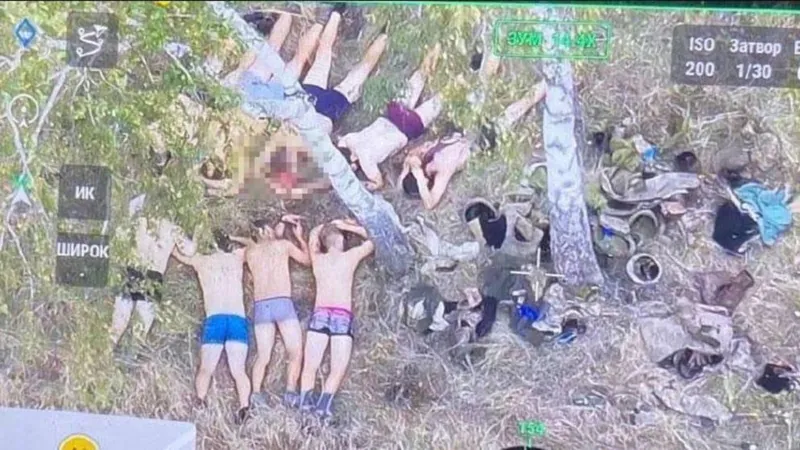
Shocking Atrocities: Insights into the Execution of Ukrainian POWs by Russian Forces
2024-10-13
Author: Kai
Overview of the Incident
In a grim turn of events amid the ongoing conflict, Russian forces have reportedly executed nine captured Ukrainian drone operators following their capture during a counteroffensive in the Kursk Oblast. This incident occurred after a significant Ukrainian advance into Russian territory on August 6, where approximately twelve battalions wrested control of 400 square miles of the region.
Failure to Meet Deadlines
Despite a directive from President Vladimir Putin to expel Ukrainian troops by October 1, Russian forces failed to meet this deadline. A counterattack launched by the 155th Naval Infantry Brigade managed to overtake a group of Ukrainian operators near the Ukrainian-held fortifications in Leonidovo. It was here that the harrowing events unfolded.
Execution of Ukrainian Soldiers
Upon capturing the nine Ukrainian soldiers, Russian troops reportedly stripped them to their underwear, forced them into submissive positions, and executed them by gunshot to the head. This gruesome act was corroborated by imagery from an overhead drone, released by the Ukrainian analytical group Deep State, which has ignited outrage and condemnation worldwide.
Violations of the Geneva Conventions
Deep State emphasized that these brutal executions constitute flagrant violations of the Geneva Conventions, which dictate the humane treatment of prisoners of war. Unfortunately, this incident is part of a broader pattern of abuse. Ukrainian human rights commissioner Dmytro Lyubinets announced an investigation into the execution of three other Ukrainian POWs in Donetsk Oblast, with reports suggesting Russian forces have killed at least 93 Ukrainian soldiers captured on the battlefield before this latest spate of violence.
Patterns of Abuse
Organizations monitoring the conflict, such as the Institute for the Study of War in Washington, D.C., have noted a disturbing trend of Russian mistreatment of Ukrainian POWs, seemingly sanctioned by individual commanders and perpetuated without consequence by higher-ups in the Russian military.
Historical Context
Such violations raise significant moral questions about the leadership guiding Russian troops. Historically, the execution of surrendering soldiers has often led to reciprocal killings. The echoes of World War II, where U.S. forces retaliated fiercely after German soldiers executed American POWs in the Battle of the Bulge, serve as a chilling reminder of how brutality in warfare breeds further violence.
Consequences of the Atrocities
As the conflict continues to escalate, these executions amplify the horrors of a war that is already causing unimaginable suffering. It is a bitter reality that such atrocities not only devastate the families of those lost but also lay the groundwork for future retaliations, making the cycle of violence seem almost incessant.
International Response
As global communities respond to these heart-wrenching events, the international calls for accountability and justice for these heinous acts are more pressing than ever. The world watches as these developments unfold, hoping for a resolution that will prevent further loss of life and suffering in this ongoing tragedy.


 Brasil (PT)
Brasil (PT)
 Canada (EN)
Canada (EN)
 Chile (ES)
Chile (ES)
 España (ES)
España (ES)
 France (FR)
France (FR)
 Hong Kong (EN)
Hong Kong (EN)
 Italia (IT)
Italia (IT)
 日本 (JA)
日本 (JA)
 Magyarország (HU)
Magyarország (HU)
 Norge (NO)
Norge (NO)
 Polska (PL)
Polska (PL)
 Schweiz (DE)
Schweiz (DE)
 Singapore (EN)
Singapore (EN)
 Sverige (SV)
Sverige (SV)
 Suomi (FI)
Suomi (FI)
 Türkiye (TR)
Türkiye (TR)